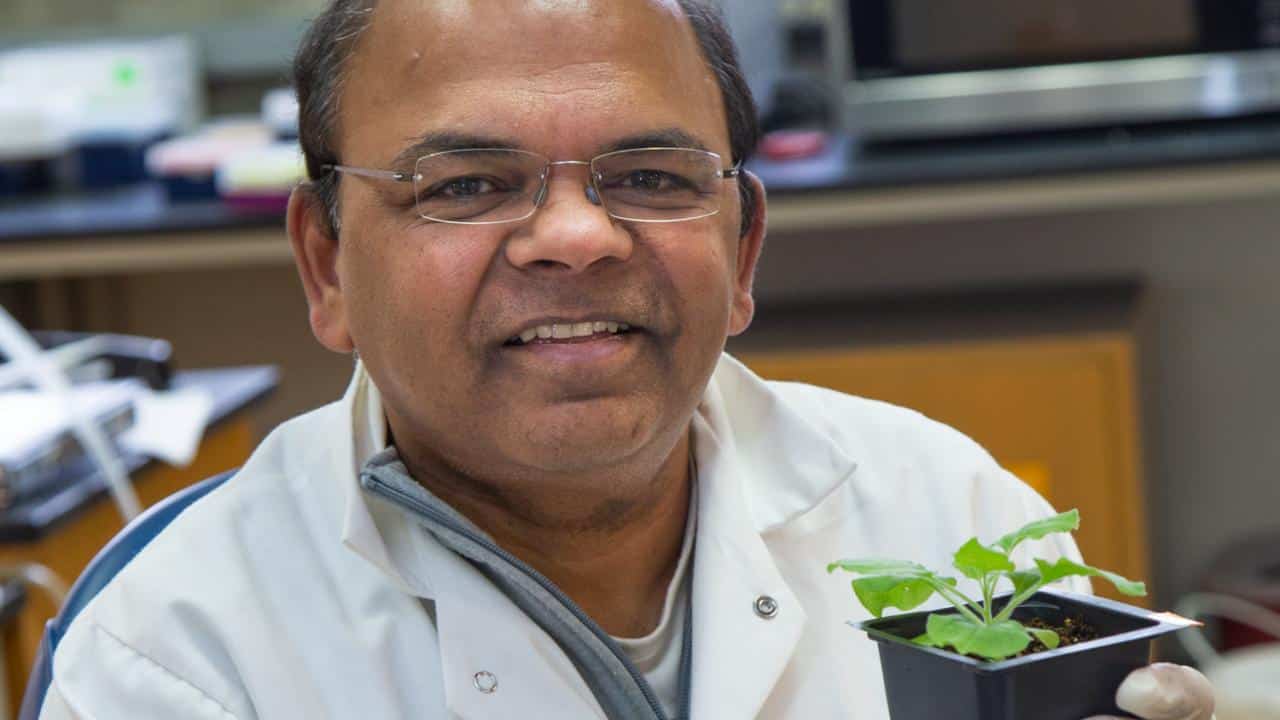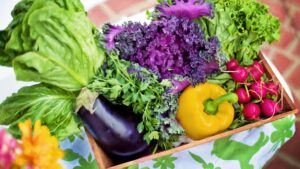Bestowing crops with pest-resistant and climate-resistant traits is a driving force to protect humanity’s precious food resources. Despite evidence that demonstrates genetically-modified crops are as safe as crops produced through traditional breeding, sections of the public remain suspicious about genetically modified organisms (GMOs).
For UC Davis Professor of Plant Biology Savithramma Dinesh-Kumar, this lingering suspicion has sparked a drive to develop genetically modified plants that eschew “transgenic” labels.
In a collaborative study published today in Nature Plants, Dinesh-Kumar’s group at UC Davis and Professor Daniel Voytas group at the University of Minnesota report fundamental first steps towards eliminating a transgenic approach to gene editing. The researchers hope to accomplish this by directing mutations using viruses, rather than by using a tissue culture setting, which is current standard procedure for GMOs.
Using viruses as a delivery vehicle, the team successfully induced genetic mutations directly in plants. Desired mutations, the team found, were passed down to the next generation at a frequency ranging from 65 to 100%.
Making Tissue Not an Issue
According to Dinesh-Kumar, most plant biology research that concerns gene-editing utilizes a soil-borne bacteria called Agrobacteria to mediate gene transfer via the introduction of a Cas9 nuclease and a single guide RNA (sgRNA), a component of the CRISPR-Cas9 system designed to target a specific sequence of the target gene for editing. In this approach, transfer DNA (from the Agrobacteria) is engineered to carry Cas9 and sgRNA. Agrobacterium is then used to transfer the engineered T-DNA cassette into the plant cells where it integrates at random positions in the genome and expresses the Cas9 and sgRNA, thus inducing genetic mutations. The resulting progeny from these plants will showcase the desired mutation.
“However, the transgene will still be there, unless you segregate it away,” notes Dinesh-Kumar.
In their Nature Plants study, the research teams engineered Tobacco rattle virus (TRV) to deliver sgRNA that targeted the gene encoding the phytoene desaturase (PDS) enzymein a Cas9 expressing transgenic line of the tobacco relative Nicotiana benthamiana. Mutation of this gene leads to a photo-bleaching effect on plant leaves, which the team hoped to induce.
The scientists fused sgRNA with mobile RNA sequences that are known to move through plant vasculature to germline tissue, with the assumption that this will enhance heritability of gene editing frequency. Germline cells are responsible for passing heritable traits from one generation to the next.
About two and a half weeks after introducing the RNA sequences via the TRV vector, the team noticed bleached spots appearing on the leaves of their experimental plants, with newly emerging leaves showcasing more bleached areas. The trait carried over to subsequent generations with a frequency ranging from 65 to 100 percent.
Making the Most of the Viral Vector
While Dinesh-Kumar’s goal is to eventually create a transgenic-free editing technique for plants, he noted the team is not quite there with this study due to the experiments being performed on a Cas9 transgenic line of Nicotiana benthamiana.
“Our whole premise of using the virus vectors to deliver gene editing components is to make them non-transgenic,” says Dinesh-Kumar. “We have achieved a first step in delivering sgRNA with mobile RNAs that will give you high editing frequency.”
Next is to figure out how to manipulate the viruses to carry a Cas9 nuclease, the enzyme necessary to cut and edit a plant’s genome and sgRNA together.
If he can figure this out, it may lead to the development of a whole new system for breeding hardier and more nutritious crops.













